Kanelbullar, Swedish style
Nordstjernan spent a day with Monica Lee, whose kanelbullar are 'world famous', to learn the trade and the "secret" recipe.
-
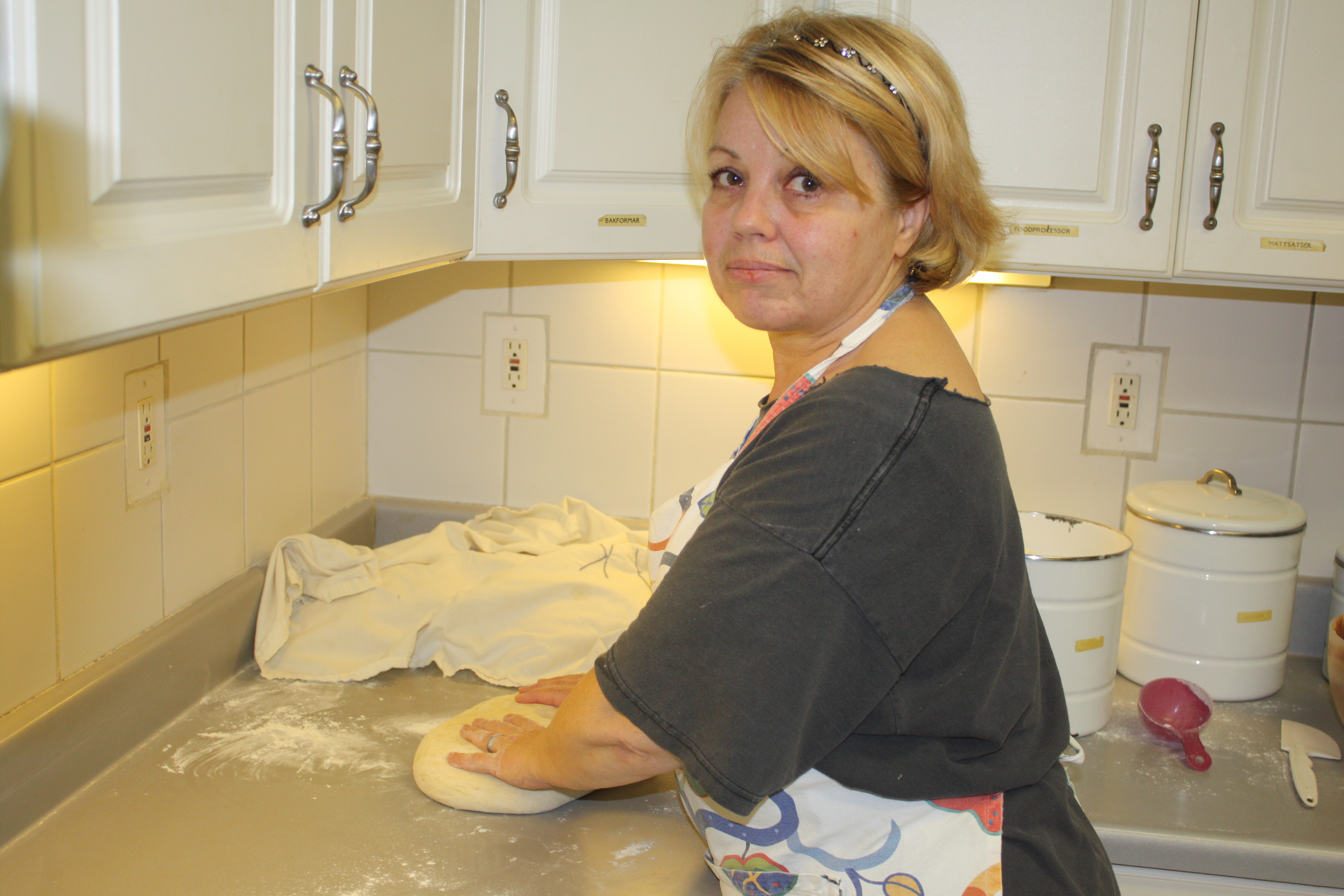 The dough is done rising.
The dough is done rising. -
-
'Kanelbullar' Swedish style
In case you're not in the Tri-state area Nordstjernan spent a day with a certified master to learn the trade and the recipe.
You haven't really had a good Swedish "kanelbulle" in the city of bright lights until you've had one at the Swedish Church! One of New York's best-kept secrets must be the Swedish Church's Swedish "kanelbullar" (cinnamon buns), which you can get only at the Swedish Church on 48th Street between Madison and Fifth.
"You can come at 11, but be aware – it'll get hot," Monica Lee says when I ask if I can come watch her bake. I don’t dare suggest I help.
I’ve eaten the church’s cinnamon buns for years, as have practically every other Swede I know in the city. You go to the church, you check out the newspapers, you have a cup of coffee and a cinnamon bun. The latter is, as the saying goes, just like mom’s – but in this case even better. Yes, really. Americans too have sniffed them out, and the “kanelbullar” have been featured in the magazine Edible Manhattan and on TV on NY Channel 1.
Monica came to the States in 1975 as a ballet dancer, and danced in two New York-based companies. After an injury forced her to quit, she taught Pilates and the Alexander technique and eventually became a tour guide. She also married and had a daughter. Like many expatriate Swedes, she’d visit the Swedish Church, and asked it she could help out.
“I’ve been here now for over 20 years,” she explained when we met.
Monica's most important mission is the baking in the church’s basement kitchen. Many have tried baking the cinnamon buns, but few were as successful as Monica.
“I don’t think I do anything special,” she says and takes out the dough, which is glossy and perfect in its consistency. “But I have done it for so long now, you know?”
Although she bakes three days a week for five to six hours at a time, which brings the total to between 700 to 900 buns a month, Monica hasn’t tired of baking.
“I’ve always been interested in baking and cooking, and I’ve also done catering. But now my oven at home doesn’t work, so I don’t bake at home at the moment.”
Monica uses dry yeast and today the cinnamon buns are done using ecological ingredients, which meant Monica had to tweak the recipe a bit.
“When you use ecological flour, you need to use more flour.”
But she does use that recipe, doesn’t she?
Well, yes and…no.
“There’s a recipe somewhere in the building,” says Monica, spreading the cinnamon-butter-sugar mixture on the dough she has rolled out on the counter. “But I don’t have it here.”
She gets a white plastic container out of the cupboard.
“I just take this,” she says with a smile, “and fill it up twice. And if I need more, I take more.”
Only occasionally does she burn her buns, and once she forgot that she had a plate in the oven. Monica rarely eats cinnamon buns herself.
“But the other day I wanted something sweet with my coffee, so I took one and I said to everyone: ‘Watch now! I’m actually going to eat one!’ It was good!”
For more information about the Swedich Church in New York:
Svenska Kyrkan, New York -
 Time to roll it out.
Time to roll it out. -
-
This is the recipe Monica Lee was given to use when she first began making cinnamon buns at the Swedish Church. She no longer uses measurements but approximates. One hint: Monica uses more butter than the recipe calls for, but doesn’t want to say just how much. The recipe yields around 100 cinnamon buns. Remember Swedish cinnamon buns don’t have the sticky icing, but big crunchy “pärlsocker” instead.
-
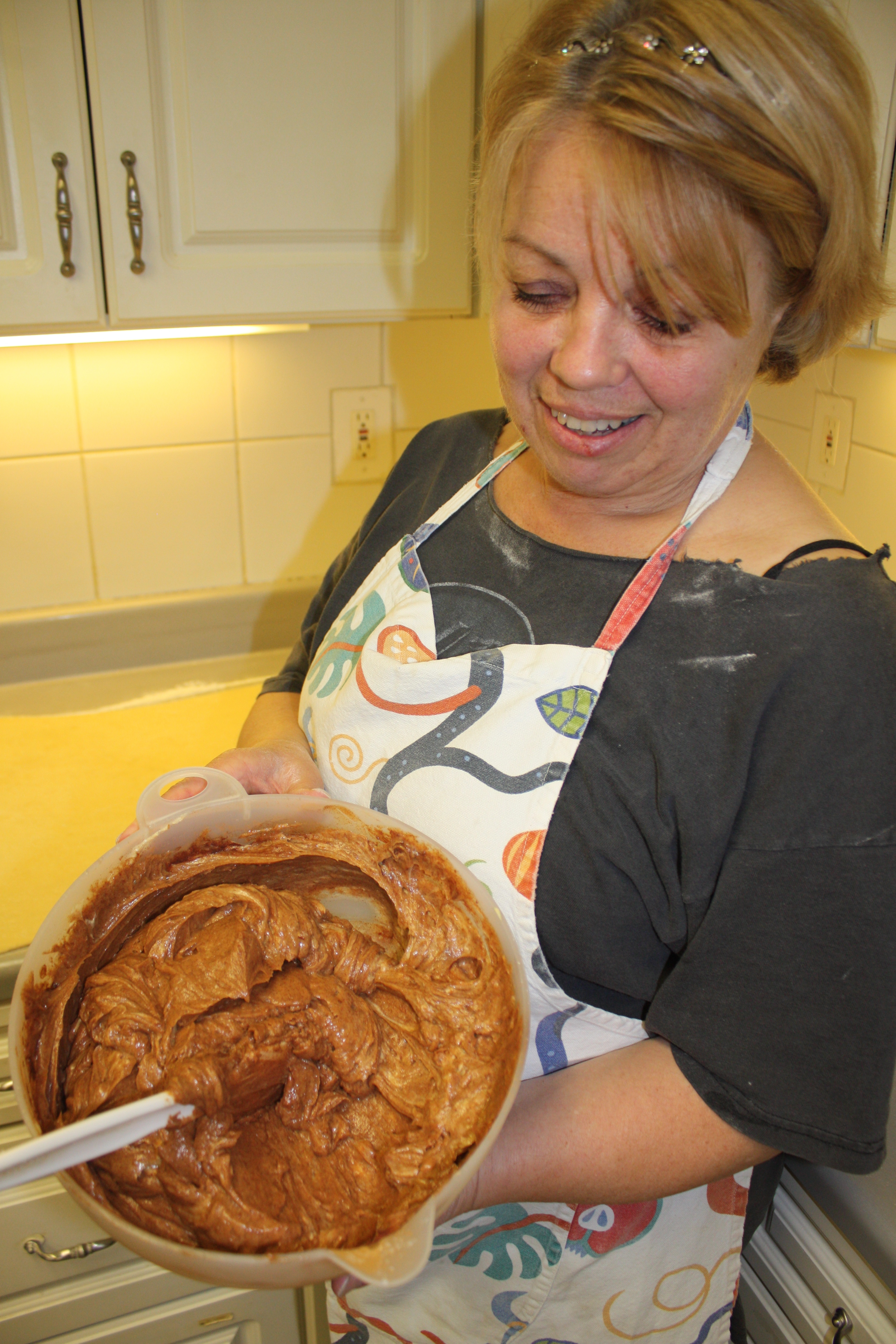 Instead of spreading butter and the cinnamon-sugar mix on separately, like most of us do, Monica mixes the ingredients (and adds vanilla sugar, too) until creamy and soft.
Instead of spreading butter and the cinnamon-sugar mix on separately, like most of us do, Monica mixes the ingredients (and adds vanilla sugar, too) until creamy and soft. -
Kanelbullar, Swedish style
Preheat oven to 325-350 F. -
 She then spreads the filling on top of the thinly rolled-out dough.
She then spreads the filling on top of the thinly rolled-out dough. -
First
5 lbs flour
0.6 cup dry yeast
1.2 cups sugar
2 teaspoons salt
Mix all by hand or in your food processor. -
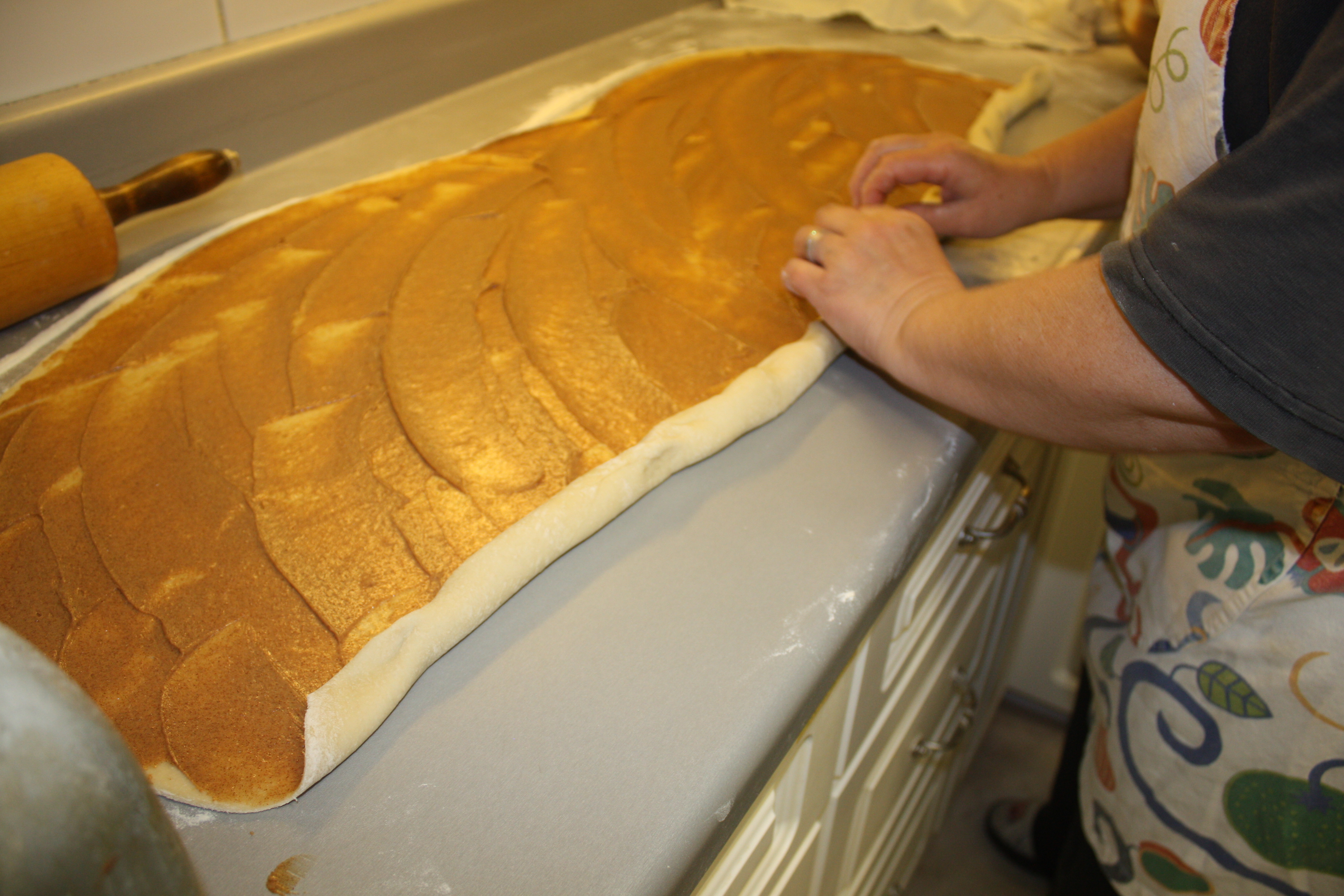 Roll it all up.
Roll it all up. -
Then:
Melt 1 lb butter or margarine.
Warm 8.4 cups milk.
Then mix the butter, the warm milk and 2 eggs (optional). Pour this wet liquid over the flour mixture, work the dough, then add more flour until you have a good dough, that’s easy to handle. Put the dough on the counter and let it rise for 30 minutes under a towel. -
 Cut the rolled-up dough into 2” slices.
Cut the rolled-up dough into 2” slices. -
While the dough is rising, you make the filling, for which you’ll need:
2.5 lb margarine or butter
0.4 cup sugar
0.4 cup cinnamon
0.4 cup vanilla sugar
Mix until soft. -
 Put the slices into baking paper cups.
Put the slices into baking paper cups. -
When the dough is done, it’s time to roll it out. Begin by dividing it in halves, then roll out the first half as thinly as you can. Spread filling on top, then roll the dough, and cut into 2” big slices. These you put into baking paper cups. Put them on a baking plate and let rise another 15 minutes under a towel. Then brush with a slightly beaten egg or two (Monica adds a bit of milk to the egg-mixture, which makes it easier to handle), then sprinkle “pärlsocker” on top. Bake in oven for 8-10 minutes. Let the kanelbullar cool before serving.
-
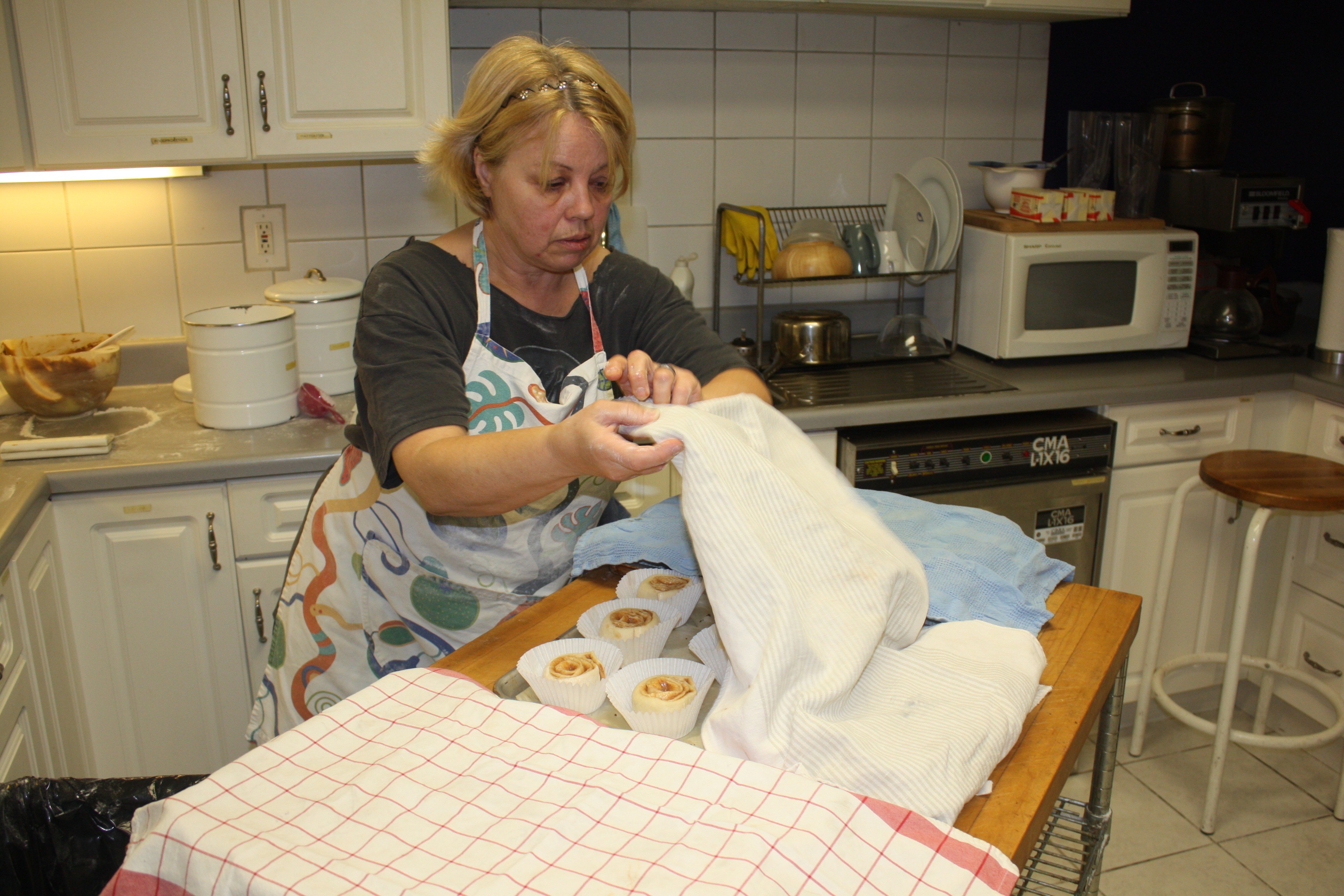 Let rise 15 minutes under tea towels.
Let rise 15 minutes under tea towels. -
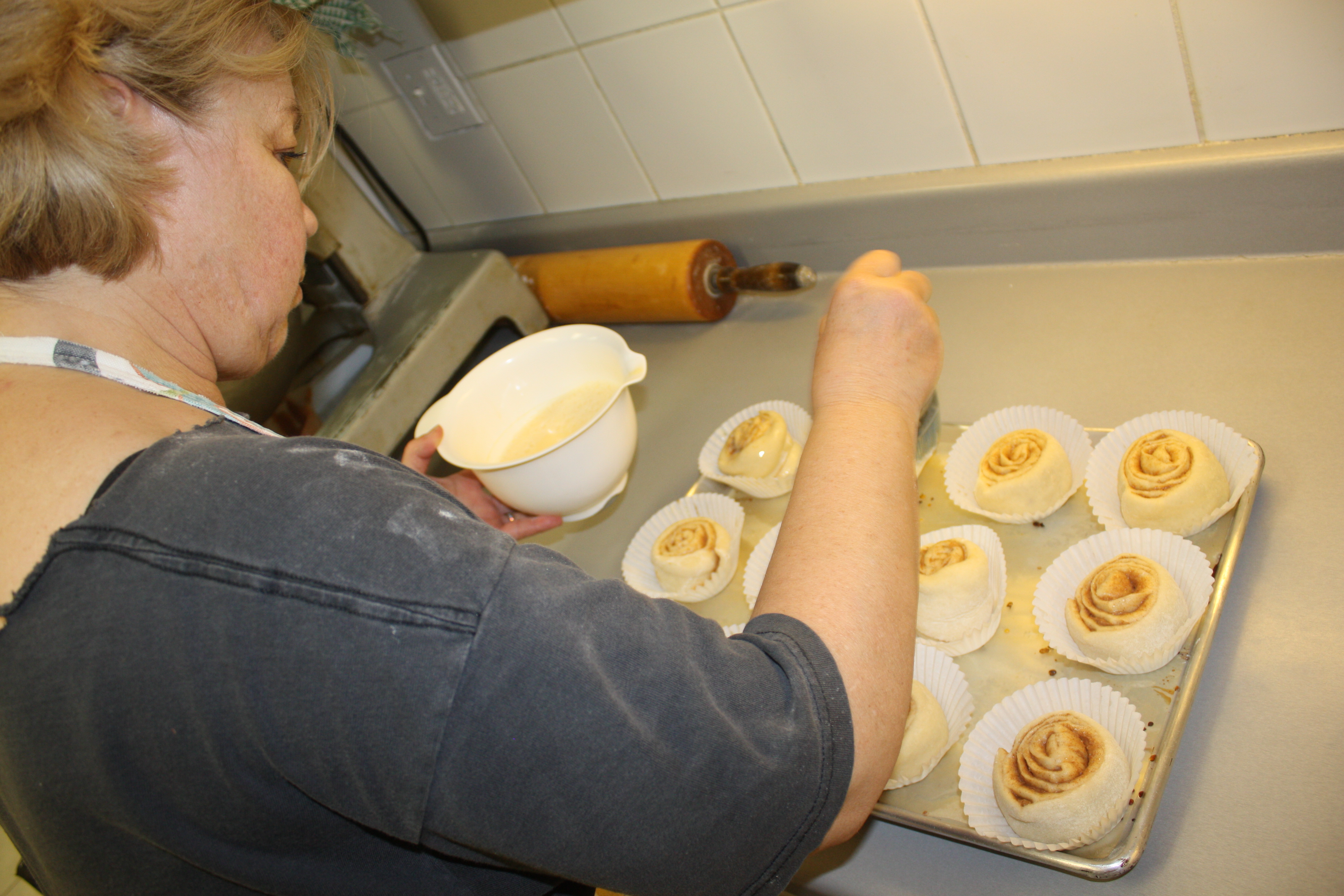 Brush with eggs and a little milk.
Brush with eggs and a little milk. -
-
-
